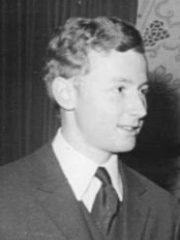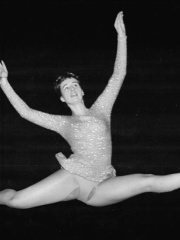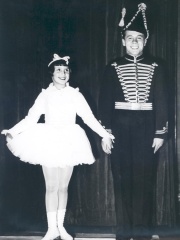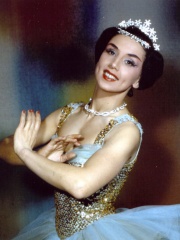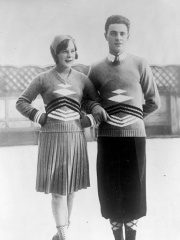
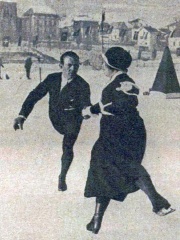
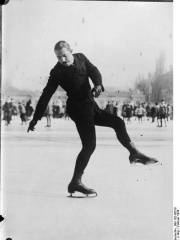
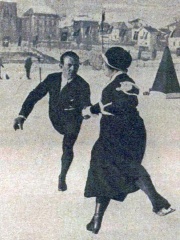
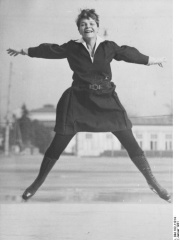
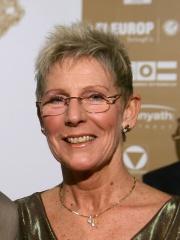
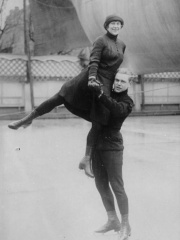
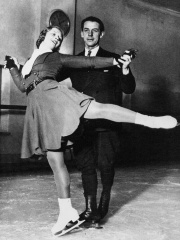
The Most Famous
SKATERS from Austria
This page contains a list of the greatest Austrian Skaters. The pantheon dataset contains 483 Skaters, 16 of which were born in Austria. This makes Austria the birth place of the 10th most number of Skaters behind South Korea, and China.
Top 10
The following people are considered by Pantheon to be the top 10 most legendary Austrian Skaters of all time. This list of famous Austrian Skaters is sorted by HPI (Historical Popularity Index), a metric that aggregates information on a biography's online popularity. Visit the rankings page to view the entire list of Austrian Skaters.

1. Karl Schäfer (1909 - 1976)
With an HPI of 62.91, Karl Schäfer is the most famous Austrian Skater. His biography has been translated into 26 different languages on wikipedia.
Karl Schäfer (17 May 1909 – 23 April 1976) was an Austrian figure skater and swimmer. In figure skating, he became a two-time Olympic champion at the 1932 Winter Olympics and the 1936 Winter Olympics. He was also a seven-time World champion (1930–1936) and eight-time European champion (1929–1936). As a swimmer, he competed at the 1928 Summer Olympics in the 200 metre breaststroke.

2. Helene Engelmann (1898 - 1985)
With an HPI of 59.56, Helene Engelmann is the 2nd most famous Austrian Skater. Her biography has been translated into 22 different languages.
Helene Engelmann (later Jaroschka, 9 February 1898 – 1 August 1985) was an Austrian pair skater. With Alfred Berger, she became the 1924 Olympic champion and a two-time world champion. She also won a world title with Karl Mejstrik.

3. Willy Böckl (1893 - 1975)
With an HPI of 59.18, Willy Böckl is the 3rd most famous Austrian Skater. His biography has been translated into 20 different languages.
Wilhelm Richard Böckl (27 January 1893 – 22 April 1975) was an Austrian figure skater. He won the World Figure Skating Championships four times and captured two silver medals at the Winter Olympics, and he also won six European Championship titles. After the end of World War I, beginning in 1922, he won the European championships six times, except for 1924, when he did not compete. Also in 1922, he came in third place at the World Championships. He came in second place at the 1923 and 1924 World Championships, and then between 1925 and 1928, won the next four Worlds. He earned two silver medals at the Olympics in 1924 and 1928, both behind Swedish skater Gillis Grafström. He defeated Grafström in the free skating portion at the 1924 Olympics. The invention of the inside Axel jump (an Axel jump taking off from an inside edge rather than the normal outside edge) has been credited to Böckl and called the "Böckl jump". After retiring from skating, he moved to the United States and became a coach at the Skating Club of New York. In 1937, he published an illustrated instructional book, Willy Boeckl on Figure Skating, which included descriptions of compulsory figures and free skating, but also included chapters on pair skating, ice dance, and carnival (ice show) skating. He published a second book in 1940, How to Judge Figure Skating, which was primarily about judging compulsory figures. In 1938, Willy Boeckl (the spelling was changed sometime after he arrived in the United States) was one of thirteen prominent figure skating instructors from the United States and Canada, who met in Lake Placid, New York, for the purpose of forming an association of figure skating instructors. This distinguished group became known as the American Skaters Guild (the name was later changed to the Professional Skaters Guild of America in 1950, and again to the current name of the Professional Skaters Association). Willy became the first president of the guild; Willie Frick its first vice-president, and Walter Arian, second vice-president. He announced a retirement from coaching in 1944 to work as president of a tire company. Boeckl continued to be involved in skating and lead an ice show tour in Europe in 1953. After retiring, Boeckl moved to Phoenix, Arizona. Following the death of his wife, he returned to Austria, where he died in 1975. He was elected into the World Figure Skating Hall of Fame in 1977.

4. Alfred Berger (1894 - 1966)
With an HPI of 58.89, Alfred Berger is the 4th most famous Austrian Skater. His biography has been translated into 20 different languages.
Alfred Berger (25 August 1894 – 11 June 1966) was an Austrian pair skater. With his skating partner, Helene Engelmann, he became the 1924 Olympic champion and a two-time world champion (1922, 1924).
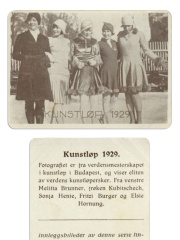
5. Fritzi Burger (1910 - 1999)
With an HPI of 57.78, Fritzi Burger is the 5th most famous Austrian Skater. Her biography has been translated into 20 different languages.
Friederike "Fritzi" Burger (6 June 1910 – 16 February 1999) was an Austrian figure skater. She was a two-time Olympic silver medalist (1928, 1932), a four-time World medalist (silver in 1929 and 1932, bronze in 1928 and 1931), the 1930 European champion, and a four-time Austrian national champion (1928–1931).

6. Herma Szabo (1902 - 1986)
With an HPI of 57.76, Herma Szabo is the 6th most famous Austrian Skater. Her biography has been translated into 21 different languages.
Herma Szabo (22 February 1902 – 7 May 1986) was an Austrian figure skater who competed in ladies' singles and pairs. As a single skater, she became the 1924 Olympic champion and a five-time world champion (1922–1926). She also won two world titles in pairs with Ludwig Wrede.

7. Trixi Schuba (b. 1951)
With an HPI of 56.65, Trixi Schuba is the 7th most famous Austrian Skater. Her biography has been translated into 21 different languages.
Beatrix "Trixi" Schuba (born 15 April 1951) is an Austrian former competitive figure skater who competed in ladies' singles. She is a six-time Austrian national champion (1967–1972), a two-time European champion (1971 and 1972), a two-time World champion (1971 and 1972), and 1972 Olympic champion. She is considered to be one of the best compulsory figure skaters ever.

8. Otto Kaiser (1901 - 1977)
With an HPI of 56.49, Otto Kaiser is the 8th most famous Austrian Skater. His biography has been translated into 17 different languages.
Otto Kaiser (8 May 1901 – 7 June 1977) was an Austrian pair skater. Competing in partnership with Lilly Scholz, he became the 1928 Olympic silver medalist and 1929 World champion. The pair won the bronze medal at Worlds in 1925 and silver from 1926 through 1928.

9. Melitta Brunner (1907 - 2003)
With an HPI of 55.99, Melitta Brunner is the 9th most famous Austrian Skater. Her biography has been translated into 16 different languages.
Melitta Kreckow Brunner (née Brunner, 28 January 1907 – 26 May 2003) was an Austrian figure skater. As a singles skater, she came in second place at the Austrian National Championships between 1926 and 1930. At the Worlds Championships, she came in fifth place in 1928, third place in 1929, and fifth place in 1930. Competing in pairs with Ludwig Wrede, she won a silver medal at the Austrian Nationals in 1928, a bronze medal in 1929, and a gold medal in 1930. They came in third place at the 1928 Winter Olympics. They also came in third place at 1928 Worlds and second place at the 1929 and 1939 Worlds. After retiring from competitions Brunner taught skating in Switzerland and Great Britain. In December 1932 she married Paul Kreckow, a German figure skater from Berlin. They married in London, where they were giving skating demonstrations. After World War II, Brunner performed in ice shows in Europe, and then immigrated to the United States. There she continued skating, and coached skaters into her nineties.
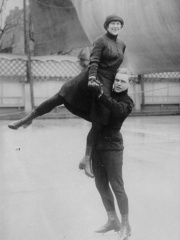
10. Lilly Scholz (1903 - 1994)
With an HPI of 55.44, Lilly Scholz is the 10th most famous Austrian Skater. Her biography has been translated into 17 different languages.
Lilly Scholz, married name Gaillard, (18 April 1903 – 14 December 1994) was an Austrian pair skater. Competing in partnership with Otto Kaiser, she became the 1928 Olympic silver medalist and 1929 World champion. The pair won the bronze medal at Worlds in 1925 and silver from 1926 through 1928. Scholz later competed with Willy Petter and won three European medals.
People
Pantheon has 16 people classified as Austrian skaters born between 1893 and 1951. Of these 16, 4 (25.00%) of them are still alive today. The most famous living Austrian skaters include Trixi Schuba, Wolfgang Schwarz, and Sissy Schwarz. The most famous deceased Austrian skaters include Karl Schäfer, Helene Engelmann, and Willy Böckl.
Living Austrian Skaters
Go to all RankingsTrixi Schuba
1951 - Present
HPI: 56.65
Wolfgang Schwarz
1947 - Present
HPI: 54.91
Sissy Schwarz
1936 - Present
HPI: 54.27
Regine Heitzer
1944 - Present
HPI: 53.54
Deceased Austrian Skaters
Go to all RankingsKarl Schäfer
1909 - 1976
HPI: 62.91
Helene Engelmann
1898 - 1985
HPI: 59.56
Willy Böckl
1893 - 1975
HPI: 59.18
Alfred Berger
1894 - 1966
HPI: 58.89
Fritzi Burger
1910 - 1999
HPI: 57.78
Herma Szabo
1902 - 1986
HPI: 57.76
Otto Kaiser
1901 - 1977
HPI: 56.49
Melitta Brunner
1907 - 2003
HPI: 55.99
Lilly Scholz
1903 - 1994
HPI: 55.44
Felix Kaspar
1915 - 2003
HPI: 54.85
Eva Pawlik
1927 - 1983
HPI: 54.69
Kurt Oppelt
1932 - 2015
HPI: 52.48
Overlapping Lives
Which Skaters were alive at the same time? This visualization shows the lifespans of the 9 most globally memorable Skaters since 1700.

